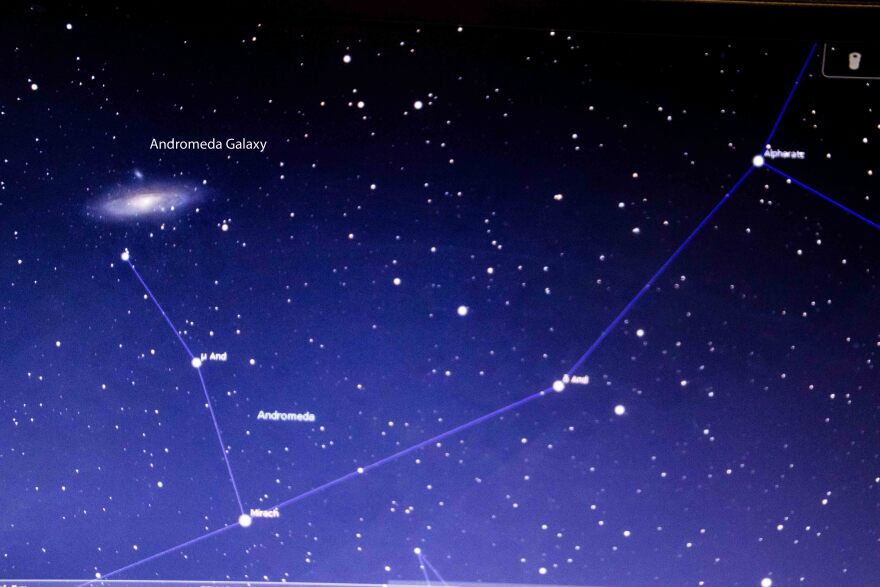The Milky Way is the home of our sun and its planets including our earth. But during the fall season we can view another distant galaxy. The Andromeda galaxy appears in the east in the evening skies in the constellation Andromeda. In Greek mythology Andromeda is the daughter of King Cepheus and Queen Cassiopeia.
The Andromeda galaxy is 200,000 light years in diameter, larger than our Milky Way galaxy. Andromeda contains over a trillion stars and is two and a half million light years away making it the most distant object we can see with our eyes on a clear dark night. You are seeing Andromeda as it was two and a half million years ago. That’s how long it takes for the light of its stars to travel through space to our eyes and telescopes.
The two galaxies are approaching each other at 250,000 miles per hour. They will merge in 4 billion years. When the two galaxies merge, they will form one giant elliptical galaxy. But the chances of the stars in the two galaxies colliding will be extremely small as the distances between stars is great.
Up until the 1920’s astronomers weren’t sure if Andromeda was a system of stars in our own galaxy or not. Edwin Hubble laid the matter to rest when he used cepheid variable stars in the Andromeda galaxy to prove it was a separate galaxy lying far outside of our own Milky Way galaxy.
Look for a small oval smudge of light just above the star Mirach in the constellation Andromeda or about one fist diameter to the left of the star Alpheratz in the left corner of the constellation Pegasus the Winged Horse.
Scan the area on a dark moonless night this fall and winter. Be patient, you will see it.


